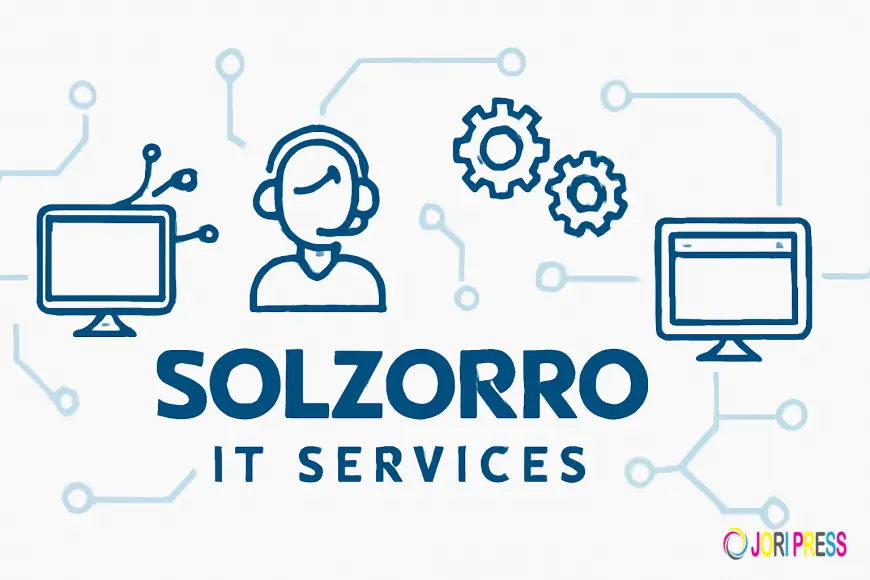Support IT Solutions: A Complete Guide for Businesses
Discover how support IT solutions improve efficiency, security, and productivity for businesses of all sizes. Learn key benefits and strategies.

Introduction
In today’s fast-moving digital world, technology drives nearly every aspect of business operations. From secure communication to data storage, IT systems are the backbone of growth. However, when these systems break down, productivity stalls. That’s where support IT solutions come in—ensuring businesses remain secure, efficient, and scalable.
This guide explores what support IT solutions are, why they matter, and how businesses can use them to gain a competitive edge.
What Are Support IT Solutions?
Support IT solutions refer to services designed to keep business technology running smoothly. These can include:
-
Technical Support: Troubleshooting hardware and software issues.
-
Helpdesk Services: Offering quick answers to user problems.
-
Proactive Monitoring: Preventing downtime through real-time system checks.
-
Cybersecurity Support: Protecting sensitive data from threats.
Instead of waiting for technology to fail, support IT solutions provide a proactive approach to maintaining efficiency.
Why Businesses Need Support IT Solutions
1. Improved Productivity
When employees spend less time dealing with technical issues, they can focus on what matters most—driving business growth.
2. Enhanced Security
Cyberattacks are increasing in both scale and sophistication. Strong IT support protects sensitive business and customer data.
3. Cost Efficiency
Hiring an in-house IT department can be expensive. Outsourcing support IT solutions often provides expertise at a fraction of the cost.
4. Business Continuity
Disasters such as server crashes or data breaches can cripple a company. Support IT services ensure businesses can recover quickly.
(For a deeper look at managed services, check out support IT solutions)
Types of Support IT Solutions
Helpdesk Support
Helpdesk teams act as the first point of contact for employees facing IT challenges. Quick issue resolution keeps operations running smoothly.
Remote Monitoring and Management (RMM)
RMM tools allow IT teams to monitor systems around the clock, spotting problems before they affect performance.
Onsite Support
For hardware issues or complex troubleshooting, onsite visits may be necessary. This ensures hands-on assistance when remote help isn’t enough.
Cloud Support
As businesses adopt cloud platforms, support solutions help with migration, integration, and ongoing management.
Cybersecurity Support
This includes firewall setup, intrusion detection, and incident response to safeguard against data breaches and compliance violations.
Key Benefits of Adopting Support IT Solutions
-
Scalability: Services adapt as the business grows.
-
Expertise: Gain access to certified professionals without full-time hires.
-
Peace of Mind: Reduce downtime with proactive monitoring.
-
Compliance: Ensure alignment with industry regulations like HIPAA or GDPR.
According to a report by Gartner, businesses that implement proactive IT support reduce downtime by nearly 60%.
How to Choose the Right Support IT Provider
Assess Business Needs
Identify whether your company requires helpdesk support, cybersecurity, cloud support, or a mix of services.
Check Industry Expertise
Not all IT providers specialize in the same industries. Ensure they understand your compliance and technical requirements.
Review Service Level Agreements (SLAs)
An SLA defines response times, uptime guarantees, and service quality—critical for accountability.
Compare Costs vs. Value
Cheapest isn’t always best. Instead, evaluate long-term value, expertise, and flexibility.
FAQs
Q1: What is the difference between IT support and managed services?
IT support focuses on troubleshooting and fixing problems, while managed services take a proactive approach, monitoring and maintaining systems to prevent issues.
Q2: Can small businesses benefit from support IT solutions?
Yes, small businesses often gain the most, since they can access enterprise-level expertise without hiring a full in-house team.
Q3: How do support IT solutions improve cybersecurity?
They provide continuous monitoring, vulnerability patching, and data protection, reducing the risk of breaches and cyberattacks.
Q4: Are support IT solutions customizable?
Yes, most providers tailor services to match specific business needs, industry standards, and growth goals.
Conclusion
Support IT solutions are no longer optional—they are essential for businesses aiming to stay competitive in today’s technology-driven world. By investing in proactive support, organizations can reduce downtime, protect data, and focus on growth.
When chosen wisely, a trusted provider becomes more than just technical help; they become a strategic partner for success.
Files
What's Your Reaction?
 Like
0
Like
0
 Dislike
0
Dislike
0
 Love
0
Love
0
 Funny
0
Funny
0
 Angry
0
Angry
0
 Sad
0
Sad
0
 Wow
0
Wow
0
























































